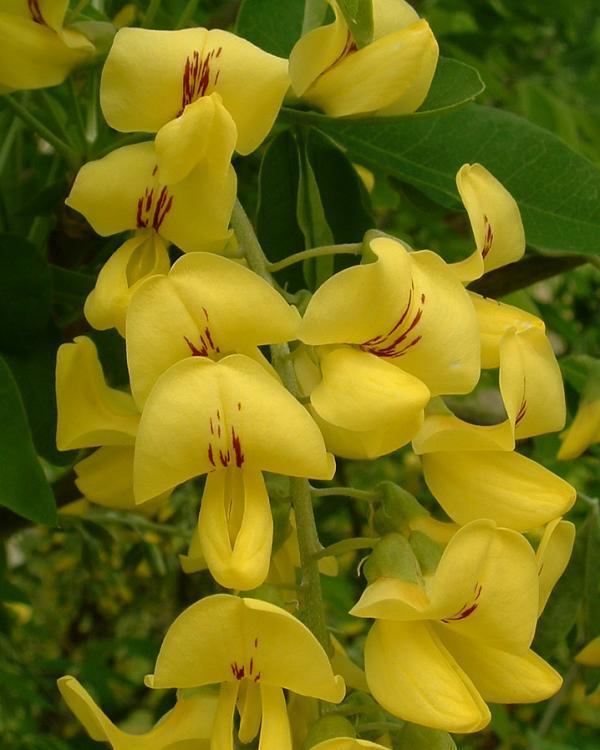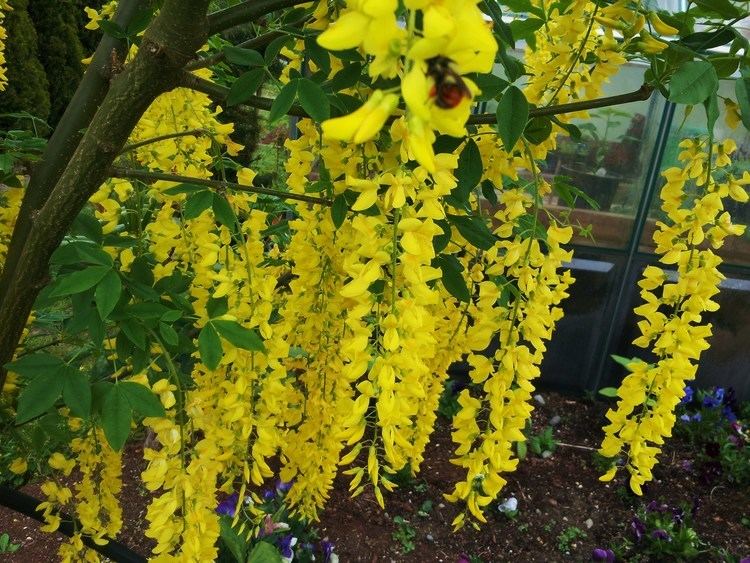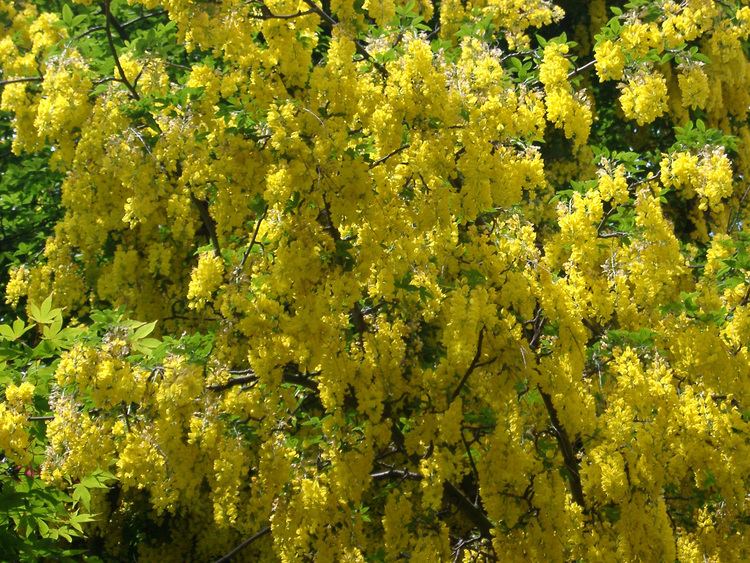Rank Genus | Scientific name Laburnum | |
 | ||
Lower classifications Laburnum anagyroides, Laburnum alpinum | ||
Poisonous plants 1 2 1 common laburnum
Laburnum, sometimes called golden chain, is a genus of two species of small trees in the subfamily Faboideae of the pea family Fabaceae. The species are Laburnum anagyroides—common laburnum and Laburnum alpinum—alpine laburnum. They are native to the mountains of southern Europe from France to the Balkans.
Contents
- Poisonous plants 1 2 1 common laburnum
- Flowers yellow flower kanikkonna flowers laburnum golden chain tree stock videos
- Description
- Woodworking
- Cultivation
- Accepted Binomials
- Species names with uncertain taxonomic status
- Hybrids
- References
Some botanists include a third species, Laburnum caramanicum, but this native of southeast Europe and Anatolia is usually treated in a distinct genus Podocytisus, more closely allied to the Genisteae ("brooms").

Flowers yellow flower kanikkonna flowers laburnum golden chain tree stock videos
Description

The Laburnum trees are deciduous. The leaves are trifoliate, somewhat like a clover; the leaflets are typically 2–3 cm (1–1 in) long in L. anagyroides and 4–5 cm (1.5–2 in) long in L. alpinum.

They have yellow pea-flowers in pendulous leafless racemes 10–40 cm (4–15.5 in) long in spring, which makes them very popular garden trees. In L. anagyroides, the racemes are 10–20 cm (4–8 in) long, with densely packed flowers; in L. alpinum the racemes are 20–30 cm (8–12 in) long, but with the flowers sparsely along the raceme. The fruit develops as a pod and is extremely poisonous, it can be used medicinally.

The yellow flowers are responsible for the old poetic name 'golden chain tree' (also spelled golden chaintree or goldenchain tree).

All parts of the plant are poisonous, although mortality is very rare. Symptoms of laburnum poisoning may include intense sleepiness, vomiting, convulsive movements, coma, slight frothing at the mouth and unequally dilated pupils. In some cases, diarrhea is very severe, and at times the convulsions are markedly tetanic. The main toxin in the plant is cytisine, a nicotinic receptor agonist.
It is used as a food plant by the larvae of some Lepidoptera species, including the buff-tip.
Woodworking
Laburnum has historically been used for cabinetmaking and inlay, as well as for musical instruments. In addition to such wind instruments as recorders and flutes, it was a popular wood for Great Highland Bagpipes before taste turned to imported dense tropical hardwoods such as Brya ebenus (cocus wood), ebony, and Dalbergia melanoxylon (African monkeywood). The heart-wood of a laburnum may be used as a substitute for ebony or rosewood. It is very hard and a dark chocolate brown, with a butter-yellow sapwood.
Cultivation
Laburnum species and hybrids are cultivated as ornamental trees for gardens and parks. They are also trained as espaliers on pergolas, for ceilings of pendant flowers in season.
Most garden specimens are of the hybrid between the two species, Laburnum ×watereri 'Vossii' (Voss's laburnum), which combines the longer racemes of L. alpinum with the denser flowers of L. anagyroides; it also has the benefit of low seed production. It has gained the Royal Horticultural Society's Award of Garden Merit.
Accepted Binomials
Laburnum comprises the following species:
Species names with uncertain taxonomic status
The status of the following species is unresolved:
Hybrids
The following hybrids have been described:
